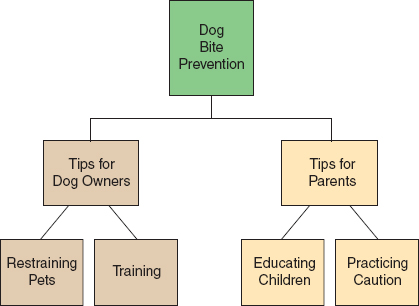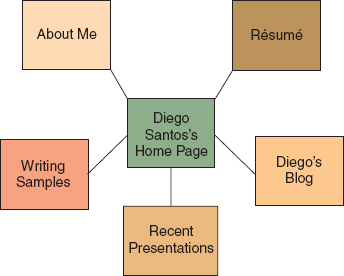Planning
Page contents:
At this point, you will find it helpful to write out an organizational plan, outline, or storyboard. To do so, simply begin with your thesis; review your exploratory notes, research materials, and visual or multimedia sources; and then list all the examples and other good reasons you have to support the thesis. (See information on paragraph-level organization.)
Informal plans
One informal way to organize your ideas is to figure out what belongs in your introduction, body paragraphs, and conclusion. A student who was writing about solutions to a problem used the following plan:
WORKING THESIS
INTRODUCTION
give background and overview (motorcycle use up dramatically), and include photograph of overcrowded lot
state purpose—
BODY
describe current situation (tell of my research at area parking lots)
describe problem in detail (report on statistics; cars vs. cycles), and graph my findings
present two possible solutions (enlarge lots or reallocate space)
CONCLUSION
recommend against first solution because of cost and space
recommend second solution, and summarize advantages
Formal outlines
Even if you have created an informal written plan before drafting, you may wish (or be required) to prepare a more formal outline, which can help you see exactly how the parts of your writing will fit together—
Most formal outlines follow a conventional format of numbered and lettered headings and subheadings, using roman numerals, capital letters, arabic numerals, and lowercase letters to show the levels of importance of the various ideas and their relationships. Each new level is indented to show its subordination to the preceding level.
Thesis statement
First main idea
First subordinate idea
First supporting detail or idea
Second supporting detail or idea
Third supporting detail
Second subordinate idea
First supporting detail or idea
Second supporting detail or idea
Second main idea
(continues as above)
Note that each level contains at least two parts, so there is no A without a B, no 1 without a 2. Comparable items are placed on the same level—
Formal outlining requires a careful evaluation of your ideas, and this is precisely why it is valuable. (A full-sentence outline will reveal the relationships between ideas—
Storyboards
The technique of storyboarding—
The following are some possible organizational patterns for a storyboard.
Linear organization
Use linear organization when you want readers to move in a particular order through your material. An online report might use the following linear organization:

Hierarchy
A hierarchy puts the most important material first, with subtopics branching out from the main idea. A website on dog bite prevention might be arranged like this:

Spoke-
A spoke-

Whatever form your plan takes, you may want or need to change it along the way. Writing has a way of stimulating thought, and the process of drafting may generate new ideas. Or you may find that you need to reexamine some data or information or gather more material.